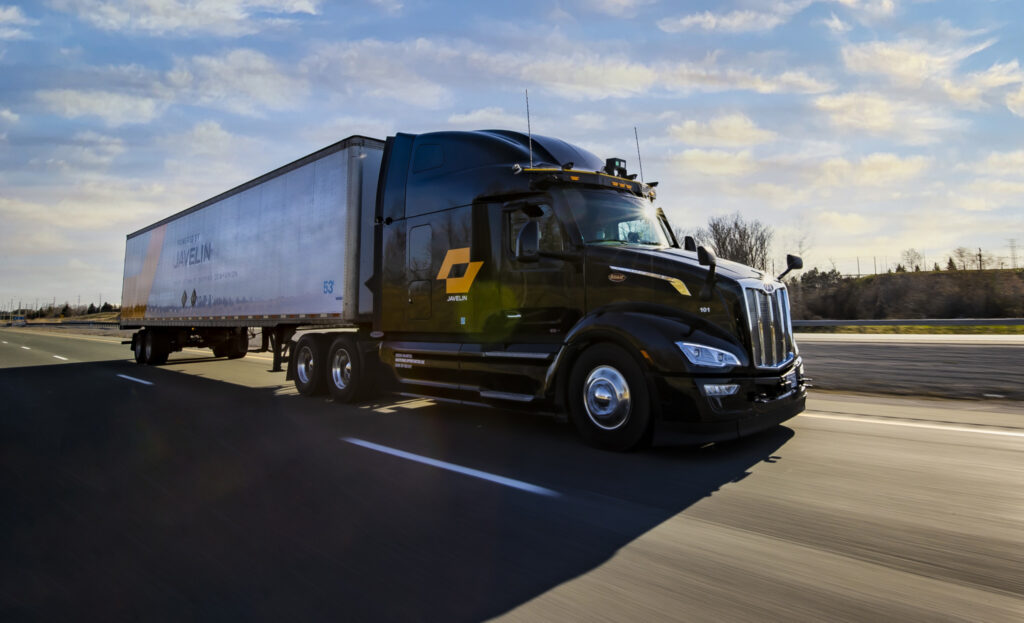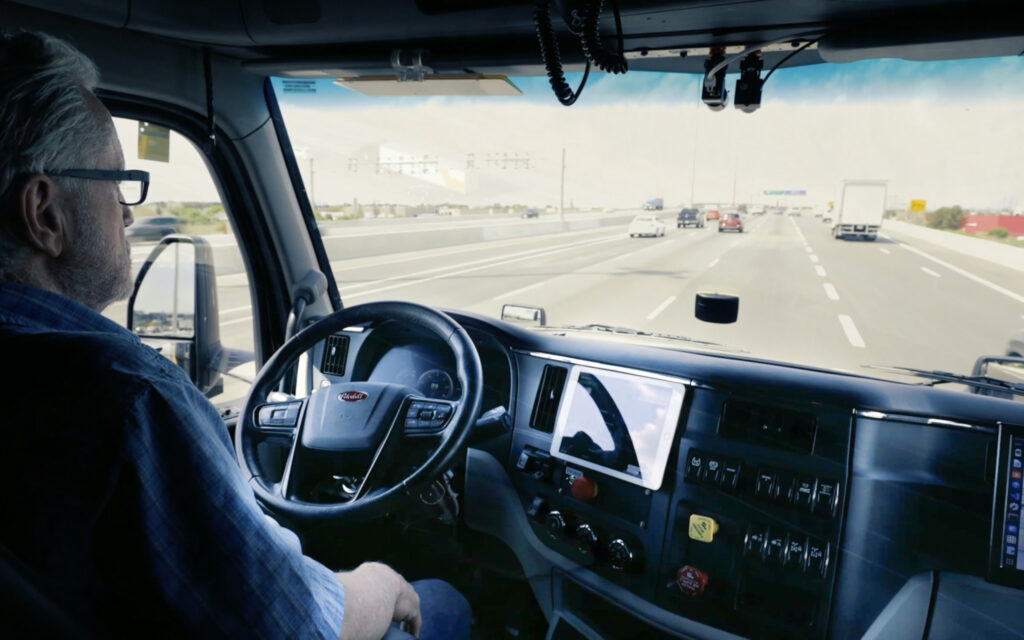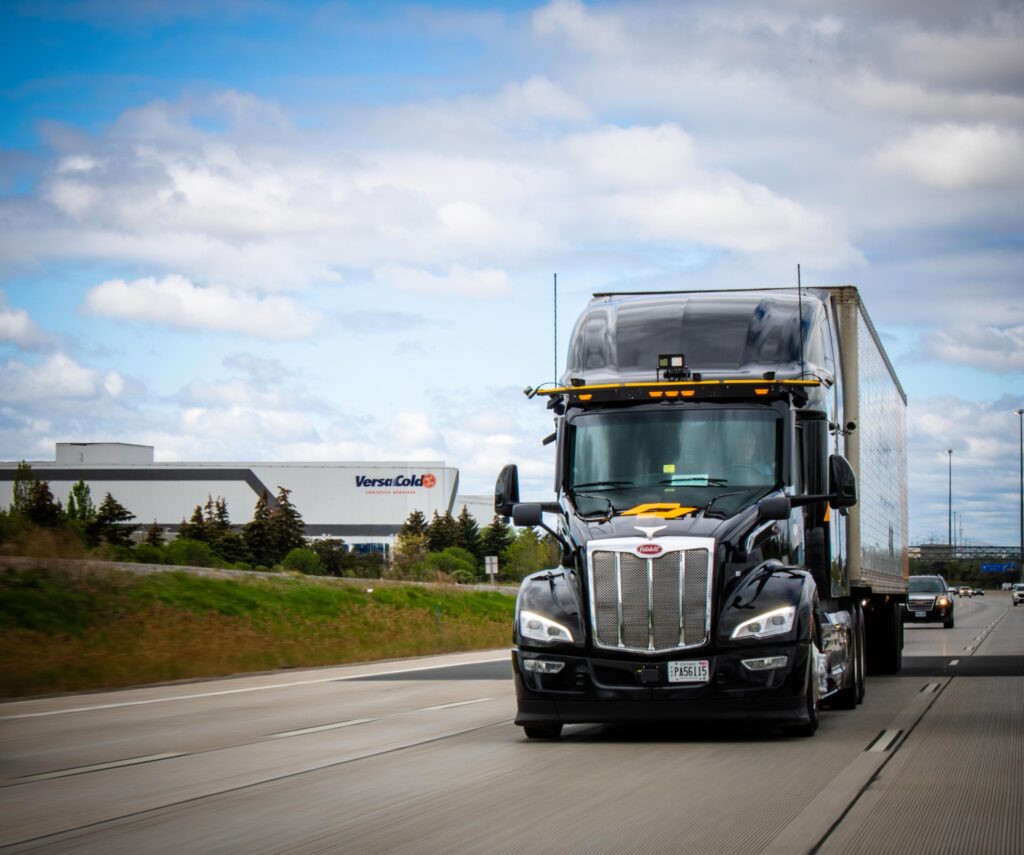Javelin Robotics’ vision for autonomous trucks builds on Canadian expertise
At first glance, Javelin Robotics’ truck looks much like any other Peterbilt 579. But the “crown” of sensors that replaces the sun visor hints at the tech-laden enhancements underneath.
Dubbed by its makers as Blackbird, the prototype represents Javelin’s vision for highly autonomous Level 4 trucks – and one that has already been put to work for Canadian fleets.
The unit has completed runs between Toronto and Montreal, as well as Toronto and Texas. And more than two dozen fleets, representing some of the most familiar nameplates on Toronto-area roads, have formally expressed an intent to buy a collective 1,696 of the underlying systems, says co-founder and CEO Addwiteey Chrungoo.

He won’t disclose which fleets are involved, citing non-disclosure agreements, but stresses that they’re small- and mid-sized operations which have largely been overlooked by other autonomous truck developers.
More routes, select conditions
It’s not the only difference.
Rather than trying to develop a truck that can run autonomously along a specific corridor in all conditions, Javelin Robotics wants to serve more routes under select conditions.
“Our thesis is that if we can drive 100% of the routes 30% of the time, you’re actually going to deliver more value to businesses in the long run – because the driver shortage is not restricted to one particular geography,” Chrungoo explains.
Drivers assigned to trucks equipped by Javelin Robotics enter their destinations into a navigation system and follow the recommended routes that identify where Level 4 controls can take over with the flick of a switch. Even weather conditions are considered. And when the conditions are right, the journey is monitored by short- and long-range RGB cameras, thermal cameras, LiDAR and radar.
“It’s based on the geographical location. It’s based on weather projections for those particular times,” he says, likening the approach to “robo taxis” that won’t take unprotected left turns or operate in areas with hospitals or schools.
“You have fairly accurate estimates of where the weather is going to be at what time. We don’t necessarily need to drive autonomously under all of those conditions.”
By focusing on a “smaller pie”, highly autonomous technologies could be scaled more quickly, Chrungoo adds.

Working with co-drivers
Javelin Robotics also believes human co-drivers would remain in the cabs that the company equips, sharing driving duties with the autonomous equipment. But when the truck’s technology is in control, the vision is that the driver would be elsewhere in the cab, logging time as something other than “on-duty/driving” hours.
“As an industry, we have become too enamored with the idea of taking a driver out of the truck,” he says, referring to his peers. “To solve labor shortages, it doesn’t necessarily mean that the truck needs to drive without a human.”
It’s an approach that Javelin Robotics believes can better serve carriers with 100 to 1,500 trucks, which don’t necessarily drive the same routes every day, don’t have the resources to hand loads from one truck to another, and combine freight sourced through spot markets and contracts alike.
“For them to be able to use a driverless system that goes only on a fixed route and requires them to have drivers on both ends of the spectrum is impractical,” Chrungoo says.
A system developed independently of an individual OEM also reflects the realities of mixed fleets, he adds.

Supported by Y Combinator
This isn’t Chrungoo’s first exposure to autonomous trucking. He was a motion planning engineer at the now-shuttered Starsky Robotics before working with the NEXT Canada business accelerator to bring Javelin Robotics to life. Y Combinator, which had also invested in Starsky Robotics, has invested $500,000 into the work.
His “super nimble” five-member team – four members of which are based in Canada – have been rolling forward since December 2020.
“We’ve achieved significant progress with this team,” Chrungoo says, referring to how the system has evolved. Until recently they were even working from a garage near Pearson Airport in Toronto.
He won’t reveal the number of test miles covered so far, though, stressing that the focus should remain on the number of scenarios and conditions that are addressed. (Blackbird has even run under autonomous controls on highways with snow-obscured lane markings.) A truck could travel a “gazillion miles in the middle of the night” without being exposed to different challenges, he says.
“It’s not about the miles. It’s about the quality of what you are exposing your system to.”
As Canadian as the roots appear to be, however, the path to commercialization appears to be focusing more on the U.S. Twenty-two states now treat Level 4 driving systems like licensed drivers, he says, referring to a key regulatory change.
Ongoing runs on this side of the border may need to wait.
“The government is very, very supportive, and they see the need,” he insists, referring to pilot projects in Ontario as an example. “When the timing is right, I think we will also be pursuing regulations in Canada.”
Have your say
This is a moderated forum. Comments will no longer be published unless they are accompanied by a first and last name and a verifiable email address. (Today's Trucking will not publish or share the email address.) Profane language and content deemed to be libelous, racist, or threatening in nature will not be published under any circumstances.